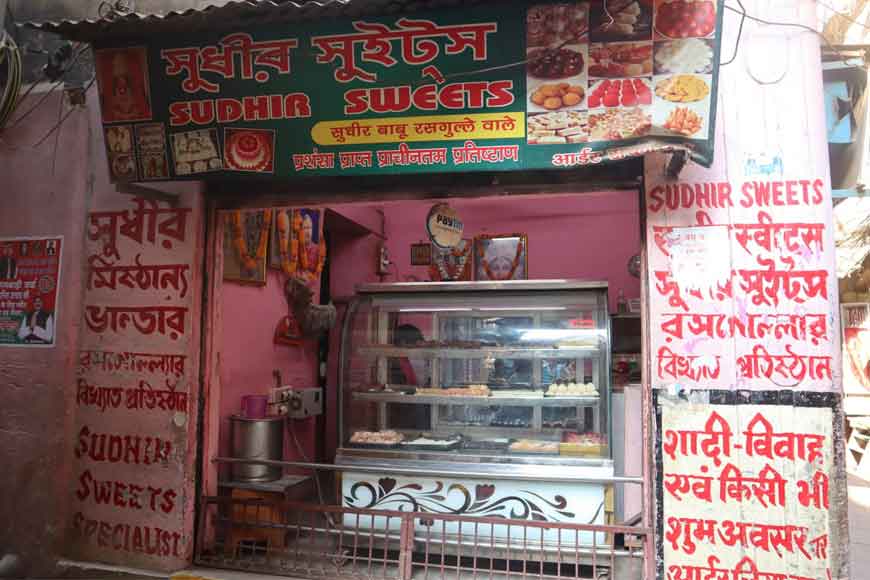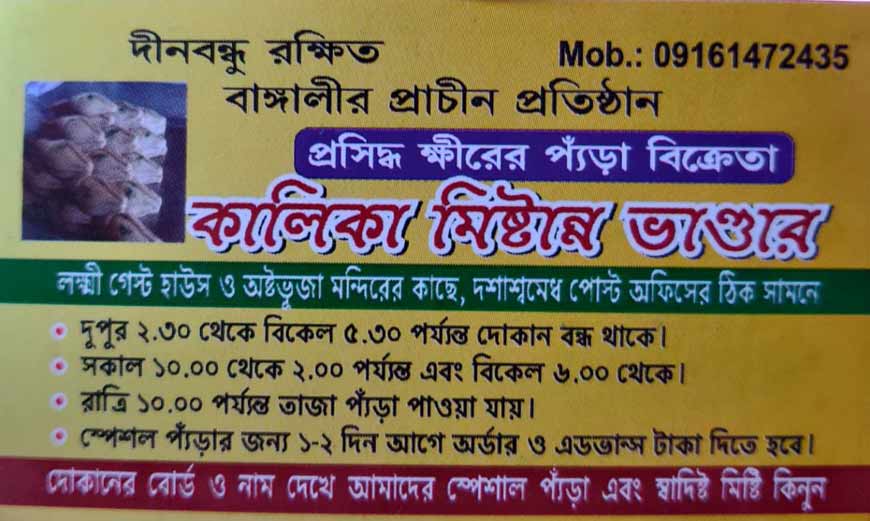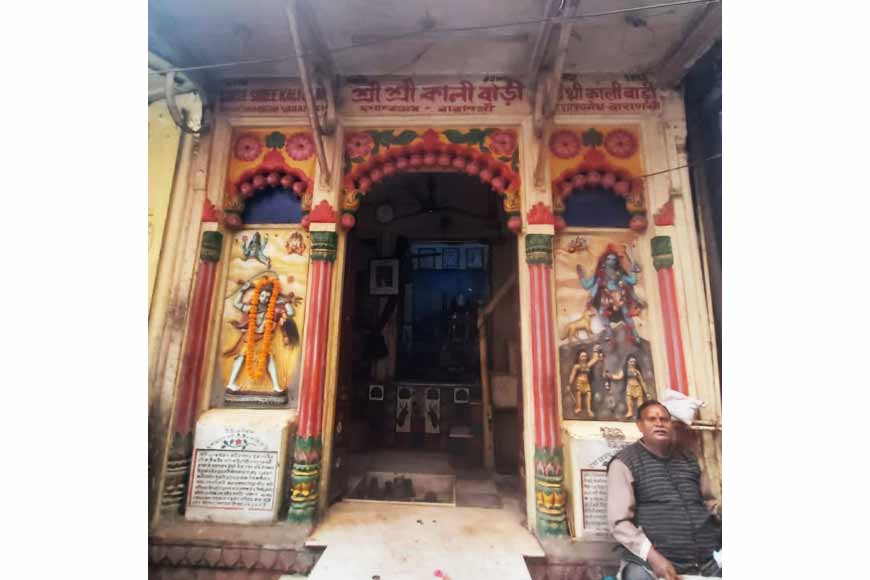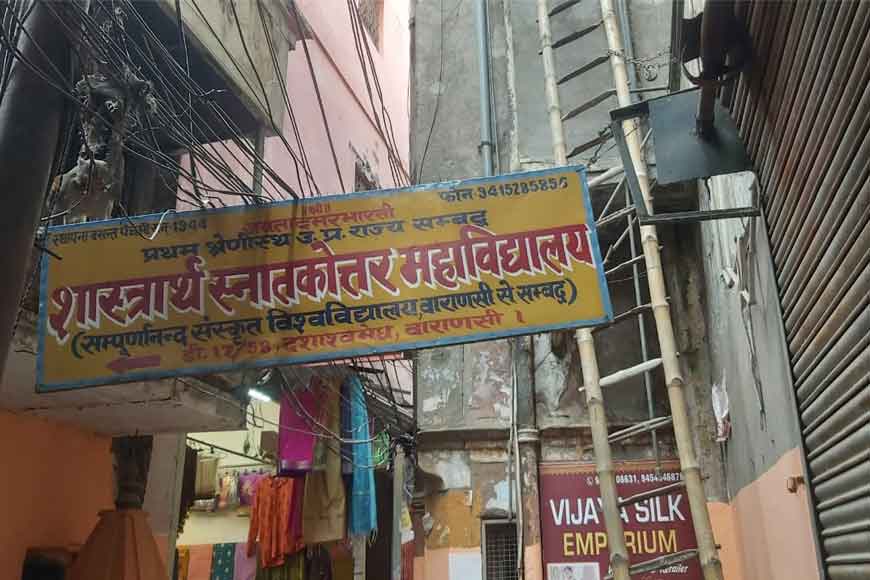A piece of Bengal in the core of Varanasi – Visiting the famous Bangali Tola

Benaras - the very name brings up a lot of emotions, especially for a Bengali girl like me. Growing up in a Bengali household, I was familiar with the place since childhood. Though many hours away from Kolkata by train, Benaras was home to so many family members and so many Bengalis had their holiday homes in this ancient land. History reflects so many stalwarts from Bengal involved in the development of Benares. I always wondered if a city so majestic exists. Whenever I heard people talk about Varanasi, or the Bengalis’ very own Benaras, they would describe the place as a city of dreams. The longest river in India, the eighty-four ghats built around the river in a semi-circular architecture, the migratory birds that flock here in the winters- everything about the city seemed artistic.
The city has been an attraction to almost everyone, even foreigners who visit the Kashi Naresh, as it is popularly known, to witness one of the oldest cities in the world. Mark Twain, the English author described the city, “Benaras is older than history, older than tradition, older even than legend and looks twice as old as all of them put together.” Twain visited Benaras in 1896, yet the words he said are true even today. It seems as if time has stopped here, Benaras portrays a different era altogether. An era that reminds us of the older times, takes us back to the time which was vividly depicted in stories like Joy Baba Felunath, the cinematic masterpiece by none other than the legend Satyajit Ray and much later in Noukadubi by Rituporno Ghosh.

When talking about Benaras, Bengalis become a part of the story very candidly. The most prominent and one of the oldest gulli (narrow lanes) in Benaras is that of the Bengalis, popularly known as the “Bangali Tola.” The Bengalis are very closely connected to Varanasi, it was home to a large Bengali population once upon a time. This Bangali Tola is situated on the Dashashwamedh Ghat, one of the oldest and most popular ghats of Benaras. From Godhoulia More, one has to walk towards the ghat, everyone knows of the narrow lane so asking any person for directions will make the route even clear. At the very entrance of the Bangali Tola gulli is the Dashashwamedh Kali Mandir and opposite to that is the famous “Kalika Mishtanna Bhandar” (Kalika Sweet Shop), “Porishiddho kheerer O lal pyerar bikreta” (pure pudding and red pyera seller) written in Bengali all over the shop. Right here in the heartland of North India, Uttar Pradesh, seeing the shop signboard in pure Bangla was eye-catching indeed.
The two things that define Bengalis are - Ma Kali, the Goddess whose name might have influenced the naming of Kolkata, and their love for sweets.DinabandhuRakshit, the owner as well as the confectioner of the shop, said: “I have been making and selling pyeras from a very young age. The shop is ancestral and the art of making pyeras is passed on from one generation to another.” On asking him about the state of Bengalis in Benaras he said, “Currently the number of Bengalis has gone down compared to the previous generations owing to many reasons. The children are studying and finding jobs in other states, hence they are settling there and leaving their ancestral homes. Some have given the old buildings on lease and visit twice a year, while some have abandoned the homes and never visit for years.” The name plates remain, though the buildings cry for their owners to be back. Mr. Rakshit sells pyeras for 400 rupees per kg. Every day he gets orders of at least 15 to 20 kg, but he prepares more than the ordered quantity as there are also a large number of flying customers. If visiting the Bangali Tola, then trying his pyeras are a must. I was shocked to see that the people around Kalika Mishtanna Bhandar were adept at speaking Bengali with the Bengali customers. It was like a mini Bengal.

As per historical documents, Bengalis started settling in Varanasi during the Pala empire around 800 CE. The Palas had a strong hold on Bengal and eastern Bihar, hence many Bengalis emigrated to this region and settled here. The city also reciprocated the Bengalis’ love, there were many Bengali Tols like those of Sanskrit Tols (places to learn Bengali or Sanskrit language). In 1947-48, there was a steep rise in the number of Bengalis in Varanasi due to partition. Many who were confused if they were a part of East Pakistan (now Bangladesh) or Bengal (now West Bengal), moved to Varanasi and settled there. This is why, both Bangaals and Ghotis can be spotted here. The Bengalis came to be loved by the people of this region. They built houses, many zamindars also built mansions, and eventually, the region got named the “Bangali Tola.”
I visited an old saree shop near Godhoulia More, named Bokul Bastralaya. The owner of the shop, Anil Bhattacharya said: “This is our third generation, we have two branches, both in Godhoulia. We love the place. Being Probashi Bangalis, we have received a lot of love from the people of the region, they love the Bengali culture and have accepted us with open arms. My son, Siddhartha Bhattacharya, who lives in Mumbai is a singer from the classical Benaras Gharana. We are very happy to live here. Here, the adda sessions are different, and the food is different yet they remind us of the old times, a nostalgic feeling. At present, there are many Durga Pujas, such as Gym Sporting Club, Sarodotsav Sangha, and Kashi Durgotsavetc which are Bangali Ghoroya Pujas. Many non-Bengalis too are part of these clubs and participate in the Durga Pujas.”

On being asked when they settled here, he said, “Our ancestors came from Chittagong. As we heard from our parents, they walked from there to Kolkata and eventually they traveled to Benaras and settled here. The shop was established in 1949.” Mukherjee lives in Bangali Tola and owns three houses here. He said that the number of Bengalis is decreasing, “It has become a tourist spot and has become so congested. Many Bengali residents are settling in the outskirts. There is a huge increase in the number of South Indians now.” A co-worker of Bokul Bastralaya, Sanjit Chowdhury, said: “South Indian population is increasing. The Tamil Sangamam is going on, so they are visiting Benaras in huge numbers.”
The history of Benaras is very rich indeed. The Bengalis have become a prominent part of it. Unfortunately, not many Bengalis reside in Benaras, but the history remains intact. The nostalgia is still alive. Being a Bengali, when I visited the Bangali Tola, it gave me a feeling that I was home. In the middle of Dashashwamedh Ghat lies a “mini-Kolkata”, as if a portion has been cut out from Bengal and pasted here. It was a mesmerizing feeling altogether.











